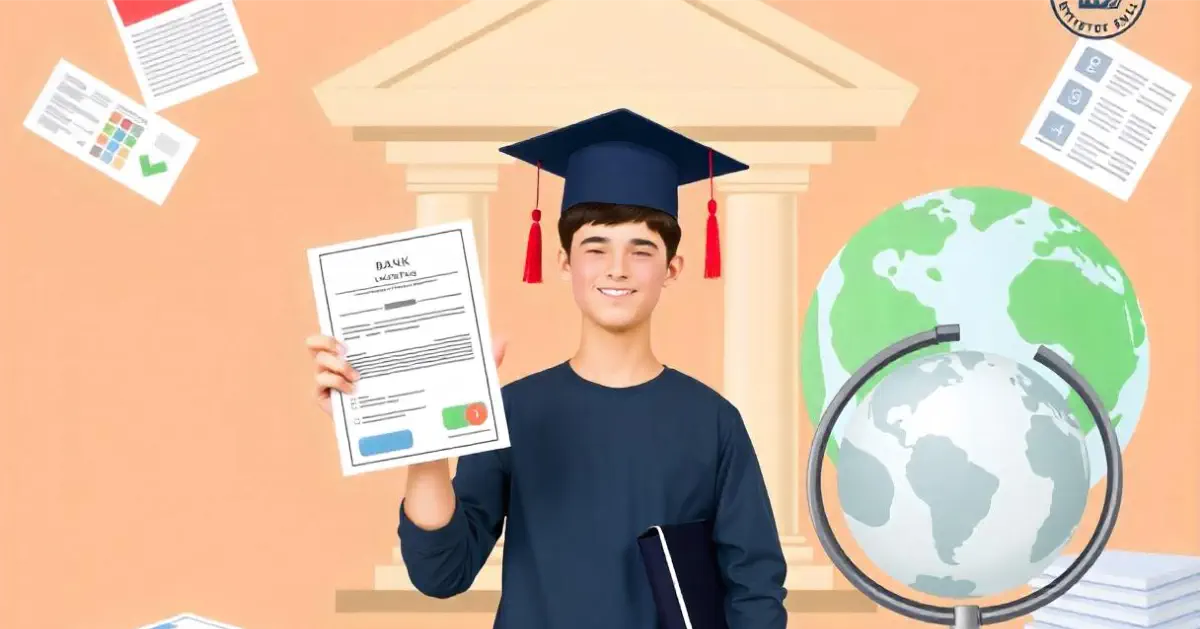RBI Guidelines on Collateral-Free Education Loans: What You Need to Know

Introduction
Pursuing higher education, especially abroad, can be a costly affair. To make quality education accessible, many students turn to education loans. In India, the Reserve Bank of India (RBI) plays a crucial role in regulating how these loans are provided by banks and financial institutions. Among the various loan options available, collateral-free education loans are highly sought after, as they allow students to borrow money without needing to pledge assets. This article explores the RBI’s guidelines for unsecured education loans, the latest updates, and important details regarding interest rates and loan processing.
RBI’s Role in Regulating Education Loans
The Reserve Bank of India, as the apex banking authority, ensures that education loans are accessible to students through regulated and transparent practices. Under the Model Education Loan Scheme (MELS) set by the Indian Banks’ Association (IBA), all scheduled commercial banks in India must adhere to specific guidelines when offering education loans.
A collateral-free loan, or unsecured loan, is one where the borrower is not required to pledge any assets. This is particularly useful for students who may not have significant financial backing but still aspire to pursue higher education. According to RBI guidelines:
- Loans of up to INR 4 lakhs are entirely collateral-free.
- For loans between INR 4 lakhs and INR 7.5 lakhs, students need to provide a guarantor.
- Loans exceeding INR 7.5 lakhs require tangible collateral.
It is essential for students to understand these requirements before applying for education loans, as it affects their overall financial planning.
Key Updates in the Latest RBI Guidelines for Unsecured Loans
The latest revision of the Model Education Loan Scheme in 2022 introduced several important updates, ensuring a more student-friendly approach to loan processing. The guidelines are specifically applicable to scheduled commercial banks, meaning private banks, NBFCs (Non-Banking Financial Companies), and other financial institutions may not adhere to these guidelines.
Here are the key points from the latest RBI guidelines on unsecured education loans:
- Universal Loan Processing: Banks are required to process education loans regardless of whether the applicant resides within the bank’s service area. This helps students from rural or underserved regions access funds more easily.
- No Collateral Requirement: Loans below INR 4 lakhs do not require any form of collateral or guarantor. This rule applies to loans taken for both domestic and international education.
- Loan Rejection and Complaints: If a loan application is rejected on baseless grounds, students have the right to escalate the issue. Initially, the complaint can be raised with the concerned bank. If there is no response within one month, students may take their case to the RBI Ombudsman for further action.
- Margin Requirements: For loans above INR 4 lakhs, banks may require students to contribute a margin of the loan amount. The margin is generally set at 5% for domestic studies and 15% for international studies.
These guidelines ensure that education loans are distributed fairly and efficiently, removing unnecessary barriers for students in need of financial support.
Interest Rate Regulations on Collateral-Free Loans
The interest rates on education loans are an important consideration for students and their families. While the RBI has deregulated the interest rates, allowing banks the flexibility to set their own rates, there are still guidelines in place to ensure fairness and transparency.
- Base Rate and Spread: The interest rate on education loans is determined by adding a spread to the bank’s internal base rate. Each bank’s Board of Directors decides on the spread, ensuring the rates remain competitive.
- Fixed vs Floating Rates: Banks offer both fixed and floating interest rates on education loans. While fixed rates remain constant throughout the loan tenure, floating rates can fluctuate based on market conditions.
- Repayment Terms: Students typically begin repaying education loans after completing their studies. However, many banks offer a moratorium period—the time during which repayment is not required—giving students additional time to secure employment before starting their repayment schedules.
It’s advisable for students to compare interest rates and repayment terms across different banks to find the most suitable loan option.
Frequently Asked Questions about Collateral-Free Education Loans
1. What is the maximum loan amount that can be obtained without collateral?
Students can borrow up to INR 4 lakhs without any collateral. Loans above this amount require a guarantor or collateral, depending on the loan size.
2. Are the RBI guidelines applicable to all financial institutions?
No. The Model Education Loan Scheme applies only to scheduled commercial banks regulated by the RBI. Private banks, NBFCs, and other institutions may follow different policies.
3. How can I file a complaint if my loan application is unfairly rejected?
You can submit a complaint to the bank directly. If the issue is not resolved within a month, escalate the complaint to the RBI Ombudsman for further action.
4. What factors determine the interest rate on education loans for studying abroad?
The interest rate depends on the loan amount, repayment period, and the borrower’s financial background. Rates typically range from 8% to 16%.
5. Can I get a loan of INR 6 lakhs without collateral?
Yes, loans between INR 4 lakhs and INR 7.5 lakhs do not require collateral, but they do need a guarantor to co-sign the loan.
Conclusion
RBI’s guidelines on collateral-free education loans offer significant relief to students who wish to fund their higher education without the burden of providing collateral. By understanding these guidelines, students can make informed decisions about their financing options, ensuring a smooth and transparent loan process. It’s always recommended to stay updated with the latest RBI regulations and consult with banks about their specific loan terms to get the best possible deal for your education journey.




